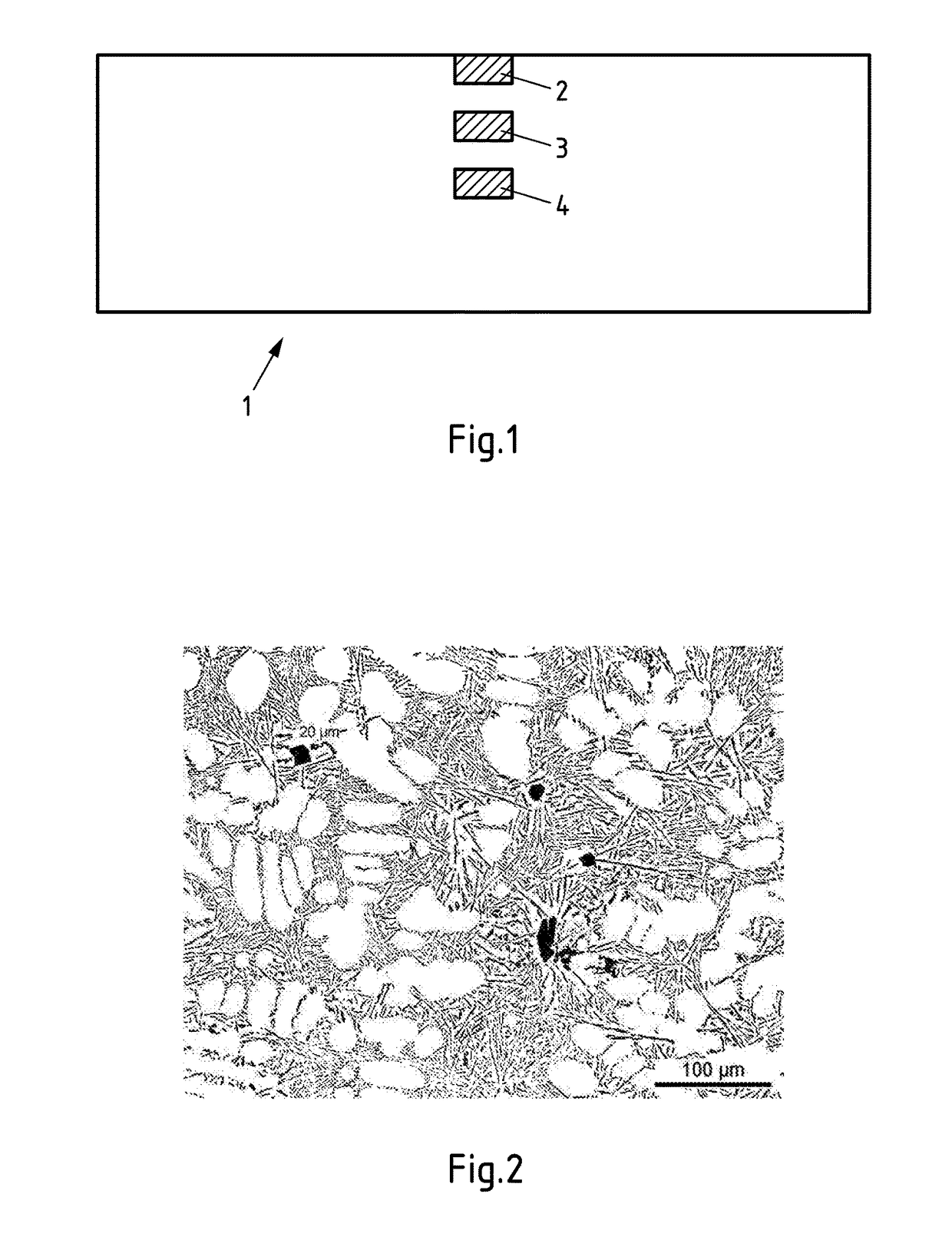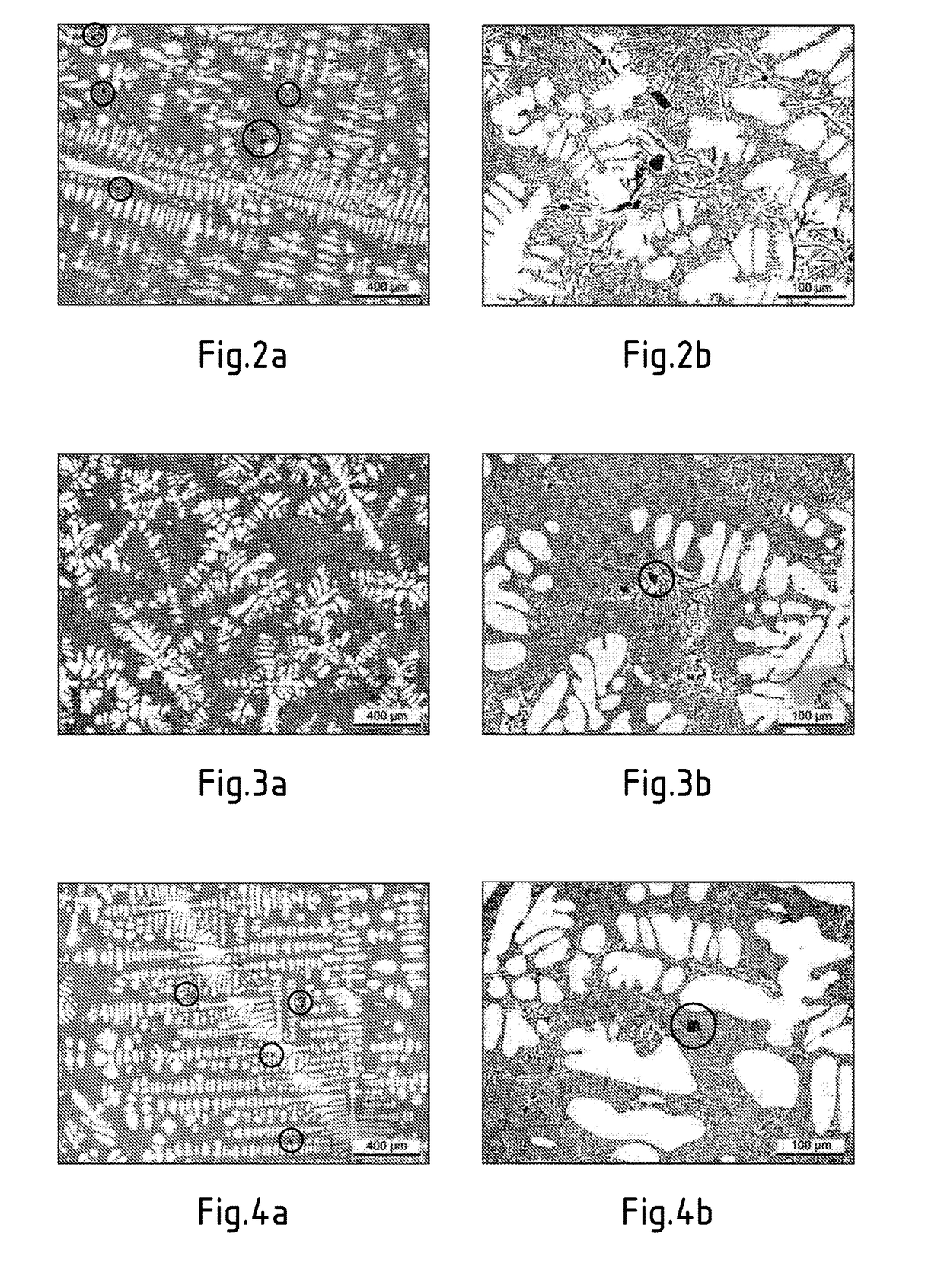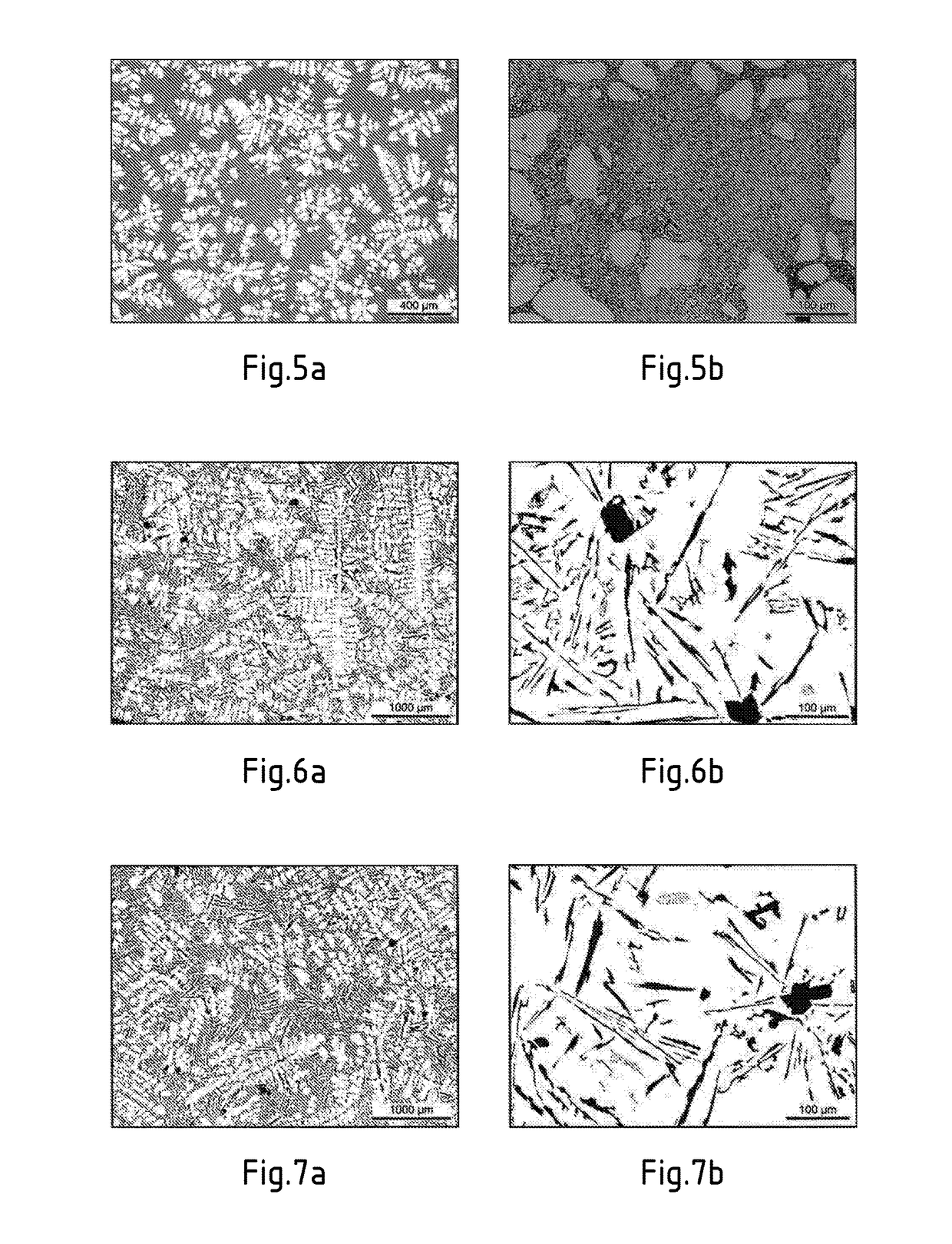Aluminium Solder Alloy Free from Si Primary Particles and Method for Producing It
a technology of aluminium solder alloy and primary particles, which is applied in the direction of welding/cutting media/materials, manufacturing tools, and soldering apparatus, etc., can solve the problems of partial melting and erosion or holes in the components after soldering, and the inability to consider refining alloy elements for use in aluminium solder
- Summary
- Abstract
- Description
- Claims
- Application Information
AI Technical Summary
Benefits of technology
Problems solved by technology
Method used
Image
Examples
Embodiment Construction
[0067]Firstly, a conventionally produced aluminium solder alloy was examined. The contents of the alloying constituents of the sample are specified in Table 1 in percentage by weight or ppm.
[0068]As can be seen from Table 1, the conventionally produced comparison alloy L1 has a content of approximately 10% silicon and 11 ppm of boron. The other constituents of the comparison alloy L1 can be found in Table 1.
TABLE 1SampleSiFeCuMnMgTiCrZnBPL1SdT10.20.0750 ppm0.00511 ppm7 ppm
[0069]The following was carried out with the comparison alloy L1. Firstly, the alloy was conventionally produced based on a standard primary aluminium pig and silicon in foundry quality together with the use of grain refiners in the form of AlTiB bars, so that a typical boron content below 30 ppm was obtained. The melting temperature before the casting was approximately 750° C.
[0070]The ingot in the casting format 600 mm×200 mm was cast and milled, i.e. the outer shell, which is up to approximately 20 mm thick, was...
PUM
| Property | Measurement | Unit |
|---|---|---|
| size | aaaaa | aaaaa |
| size | aaaaa | aaaaa |
| weight | aaaaa | aaaaa |
Abstract
Description
Claims
Application Information
 Login to view more
Login to view more - R&D Engineer
- R&D Manager
- IP Professional
- Industry Leading Data Capabilities
- Powerful AI technology
- Patent DNA Extraction
Browse by: Latest US Patents, China's latest patents, Technical Efficacy Thesaurus, Application Domain, Technology Topic.
© 2024 PatSnap. All rights reserved.Legal|Privacy policy|Modern Slavery Act Transparency Statement|Sitemap



